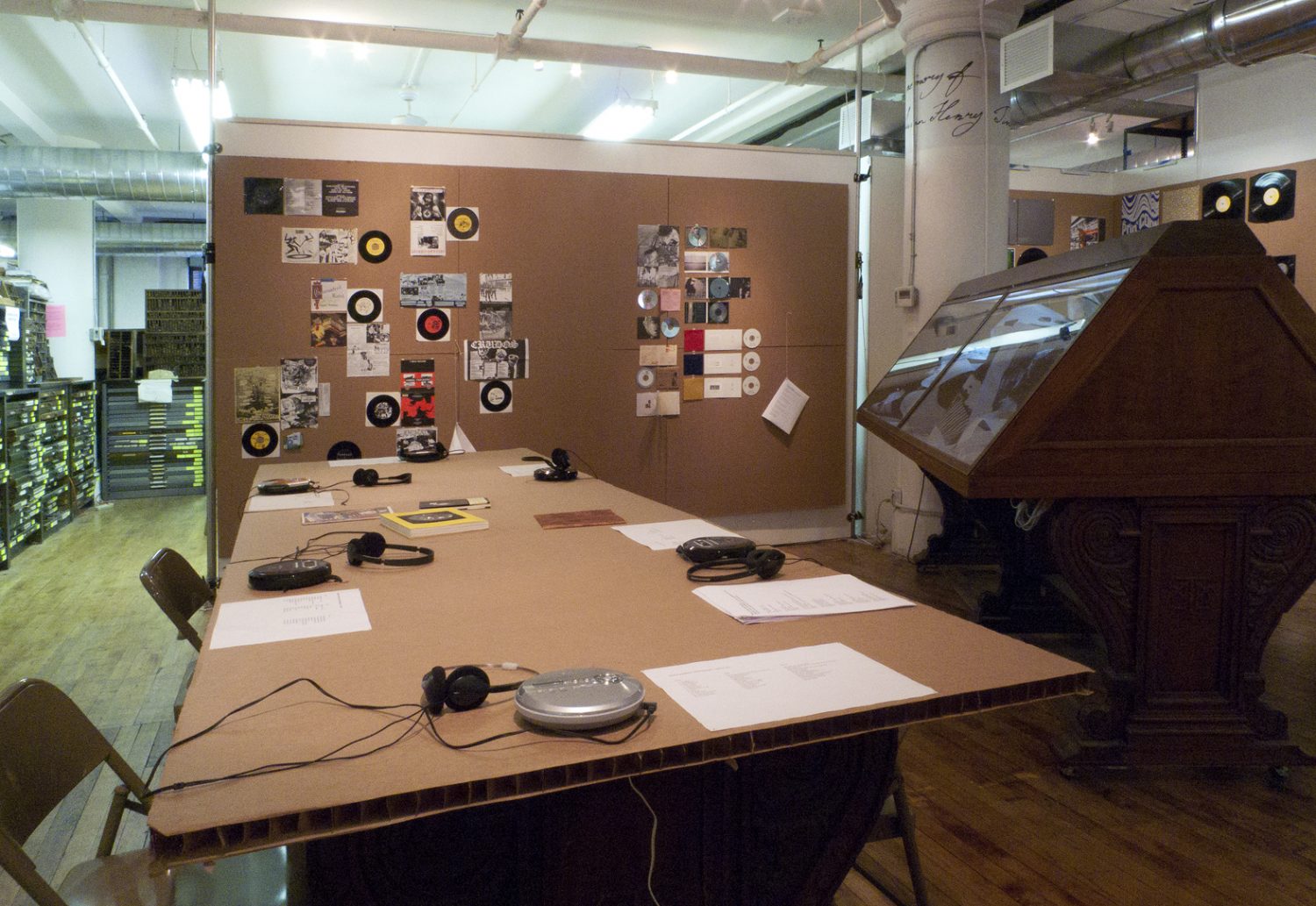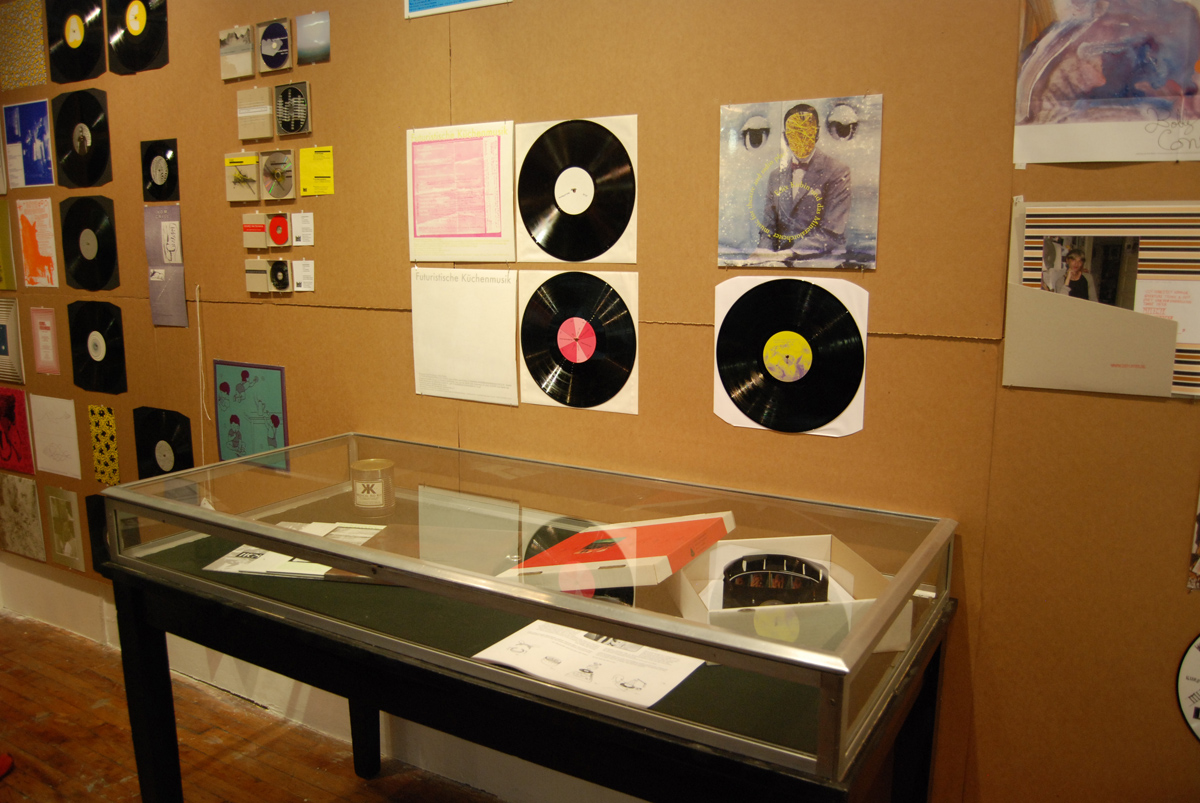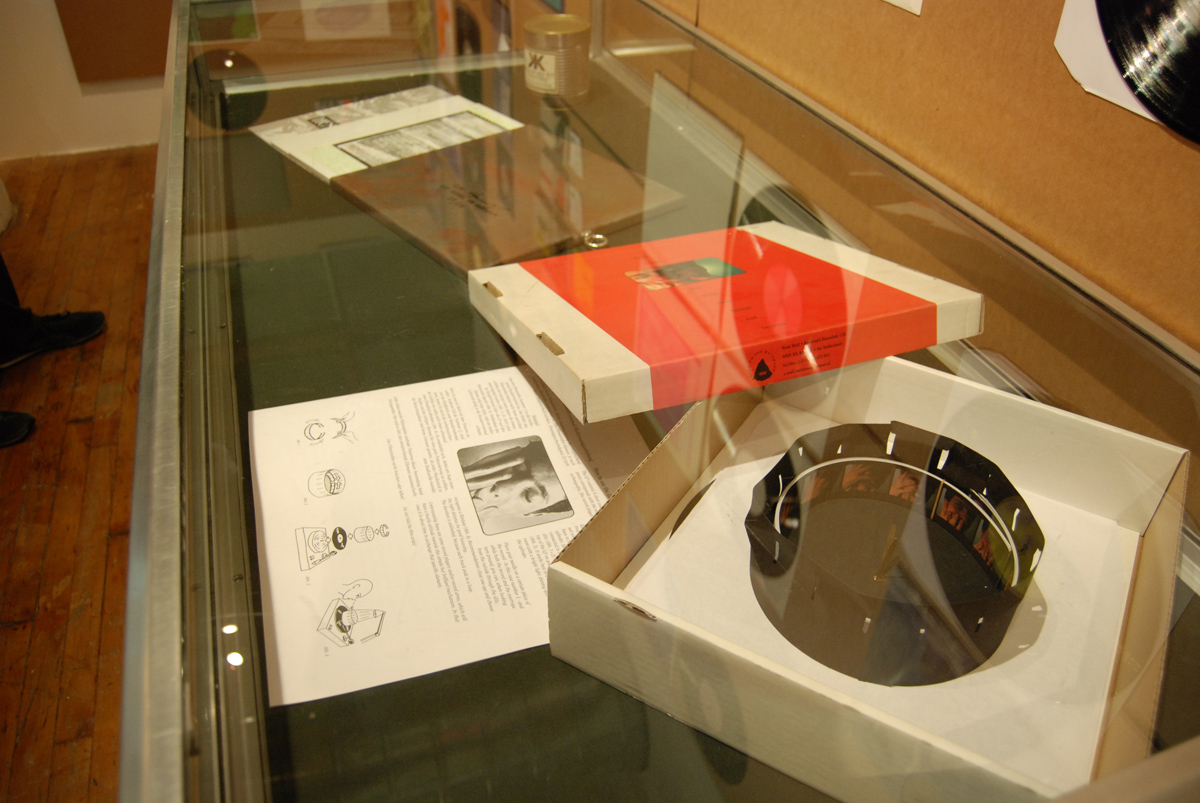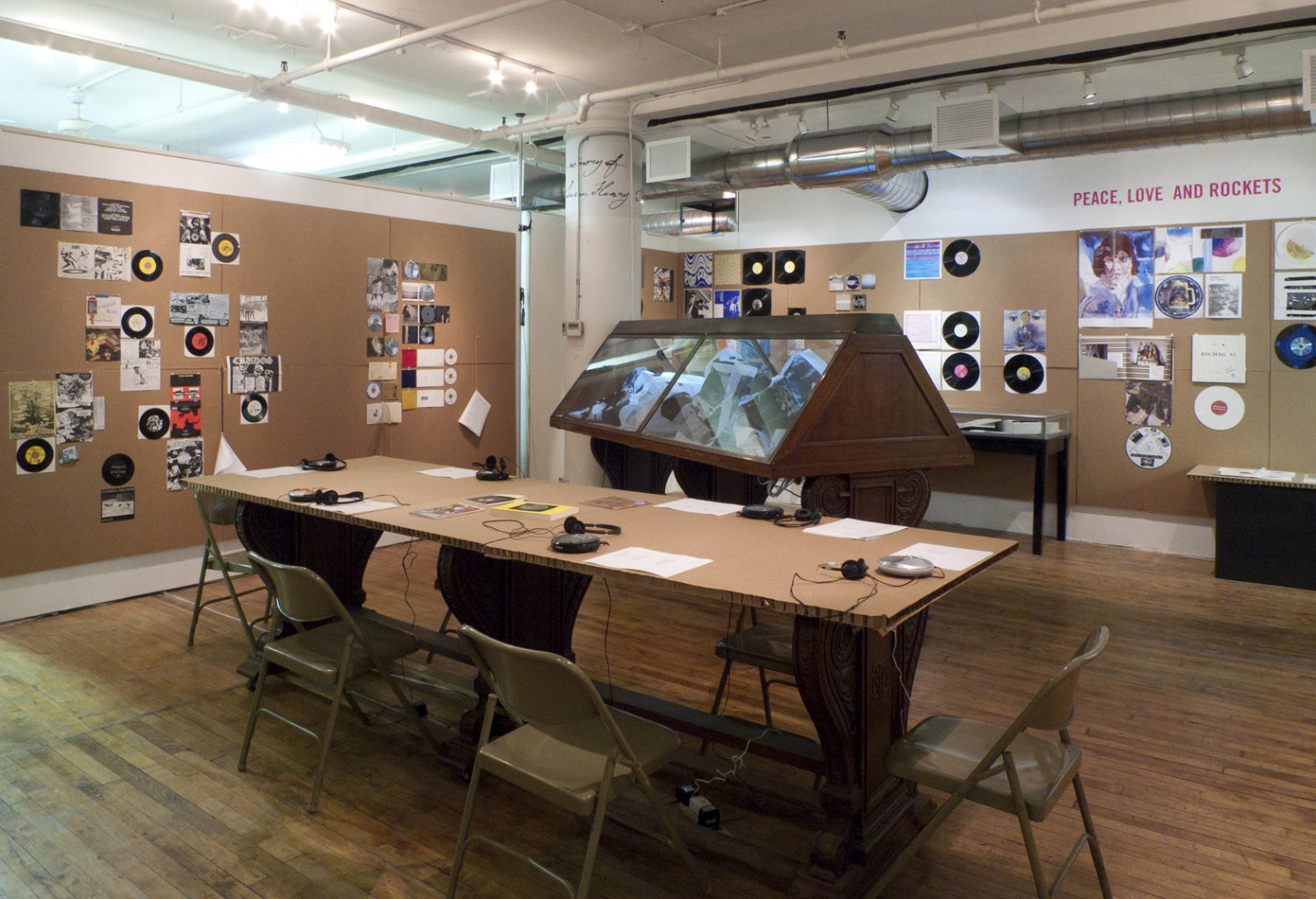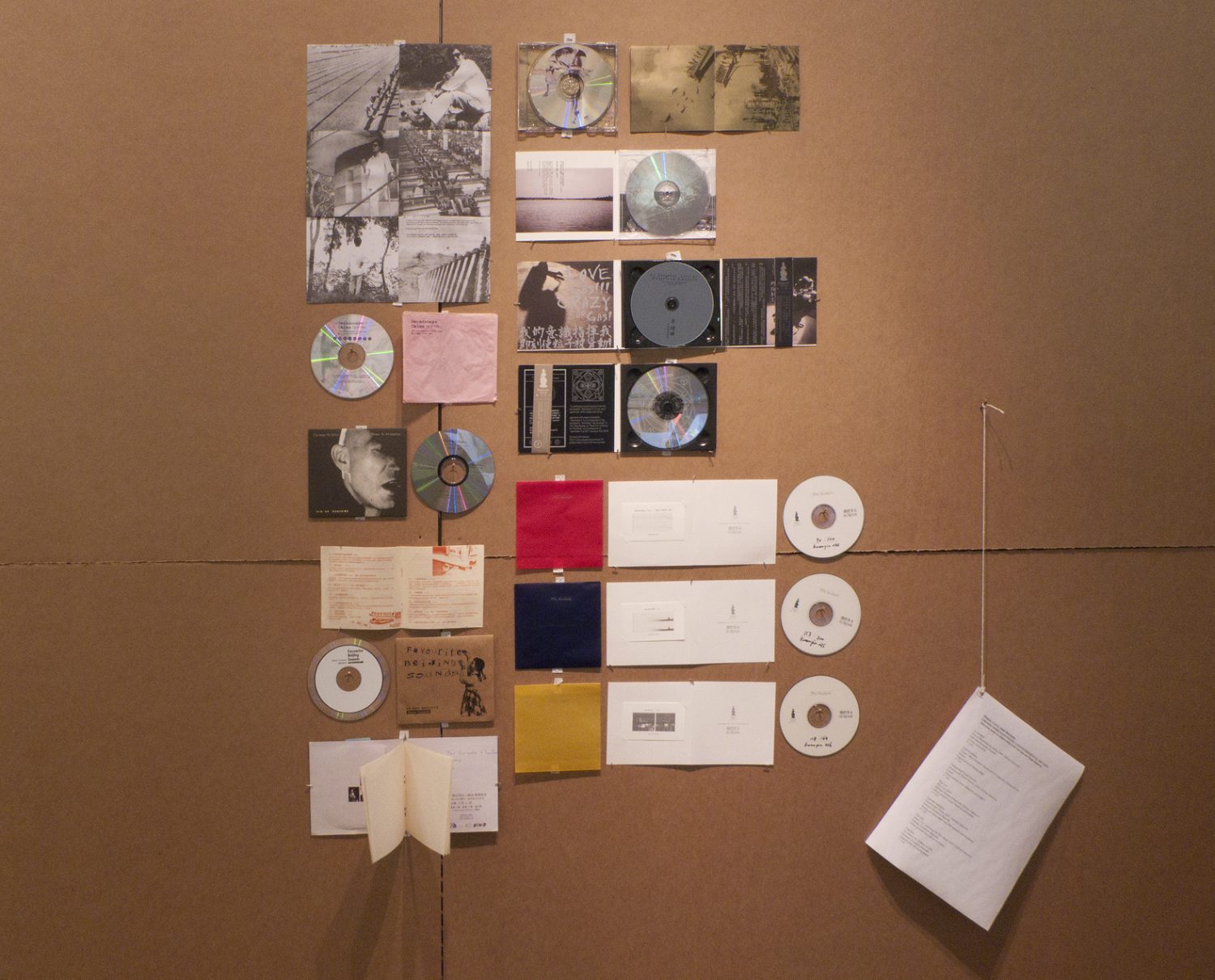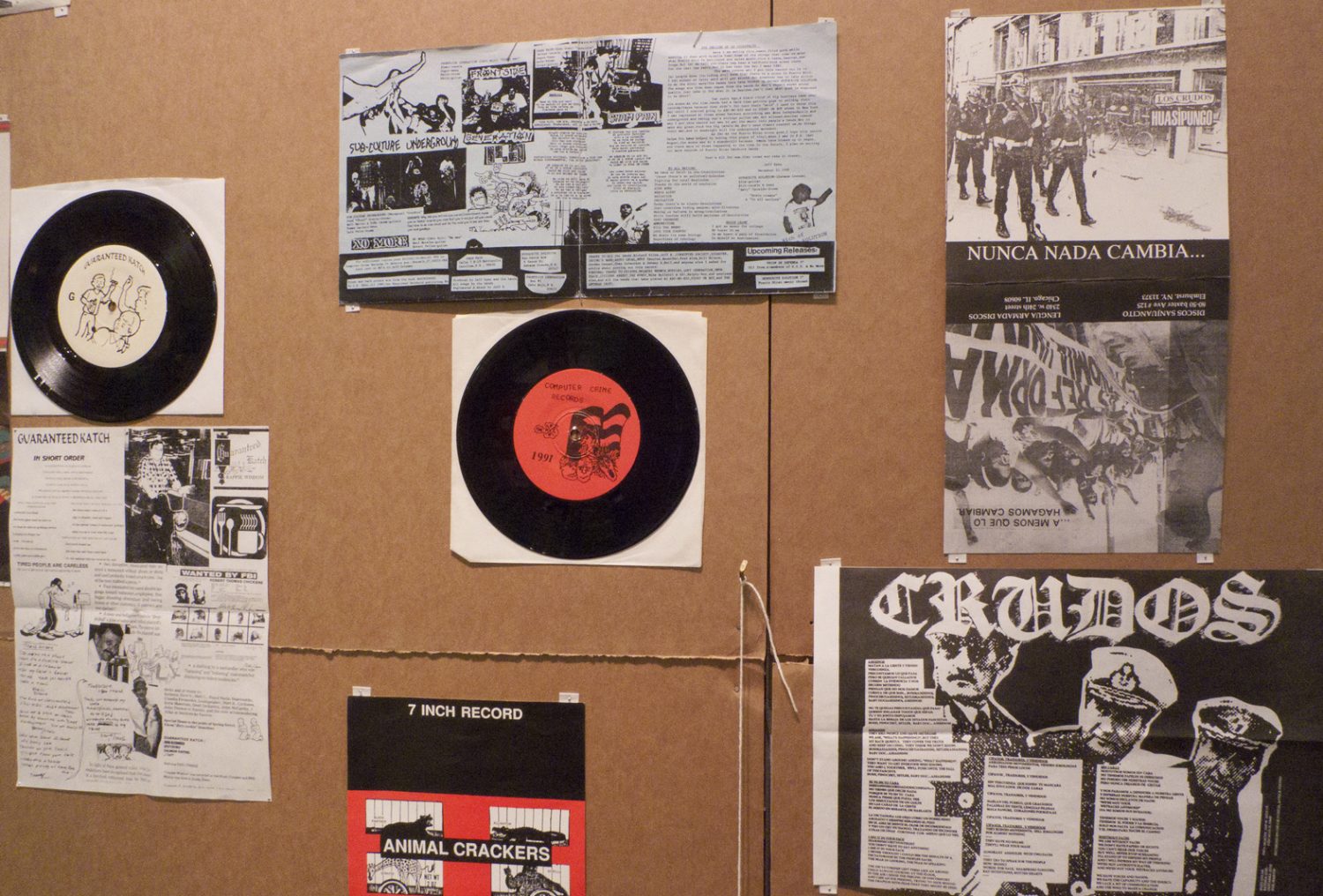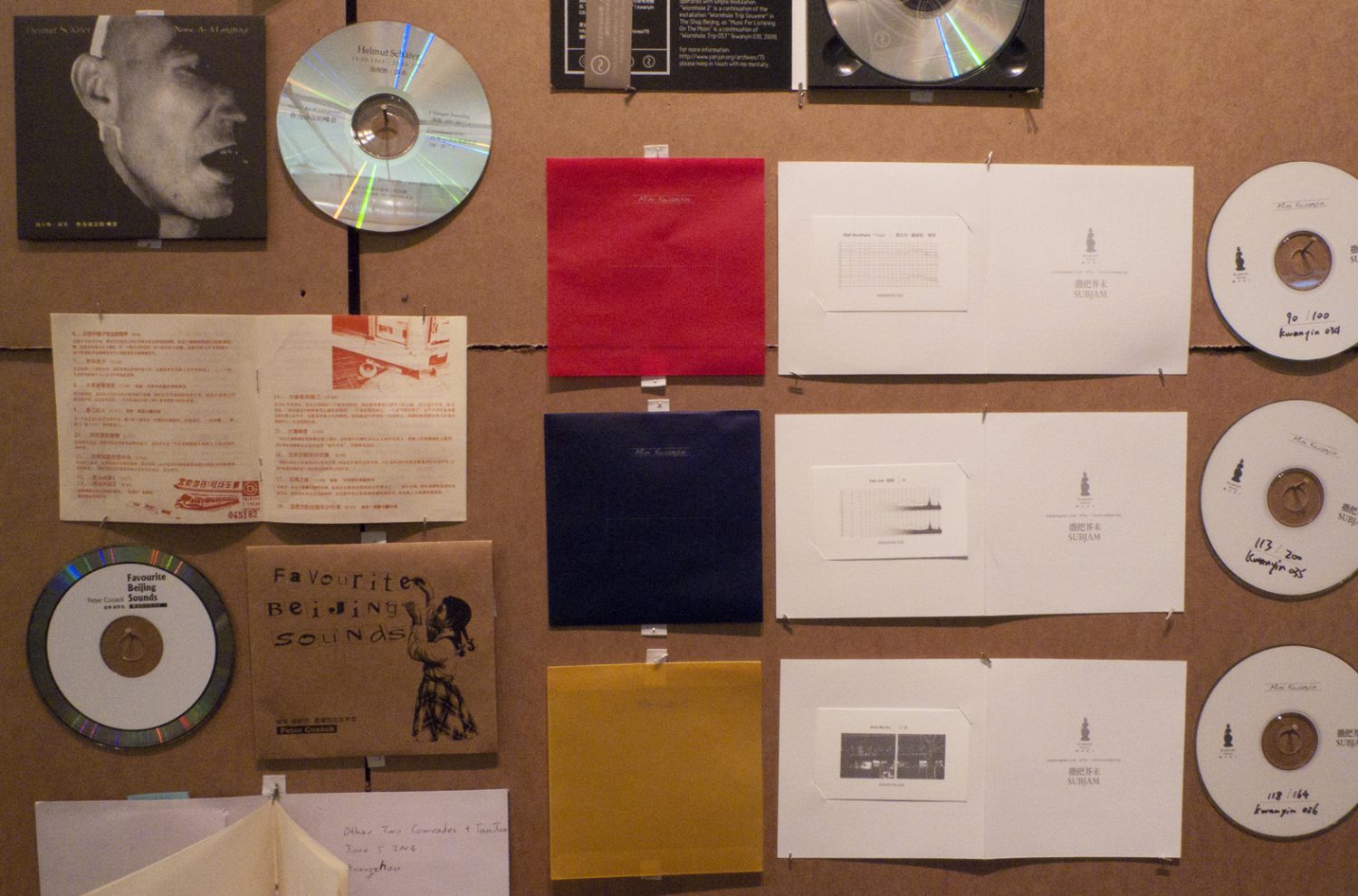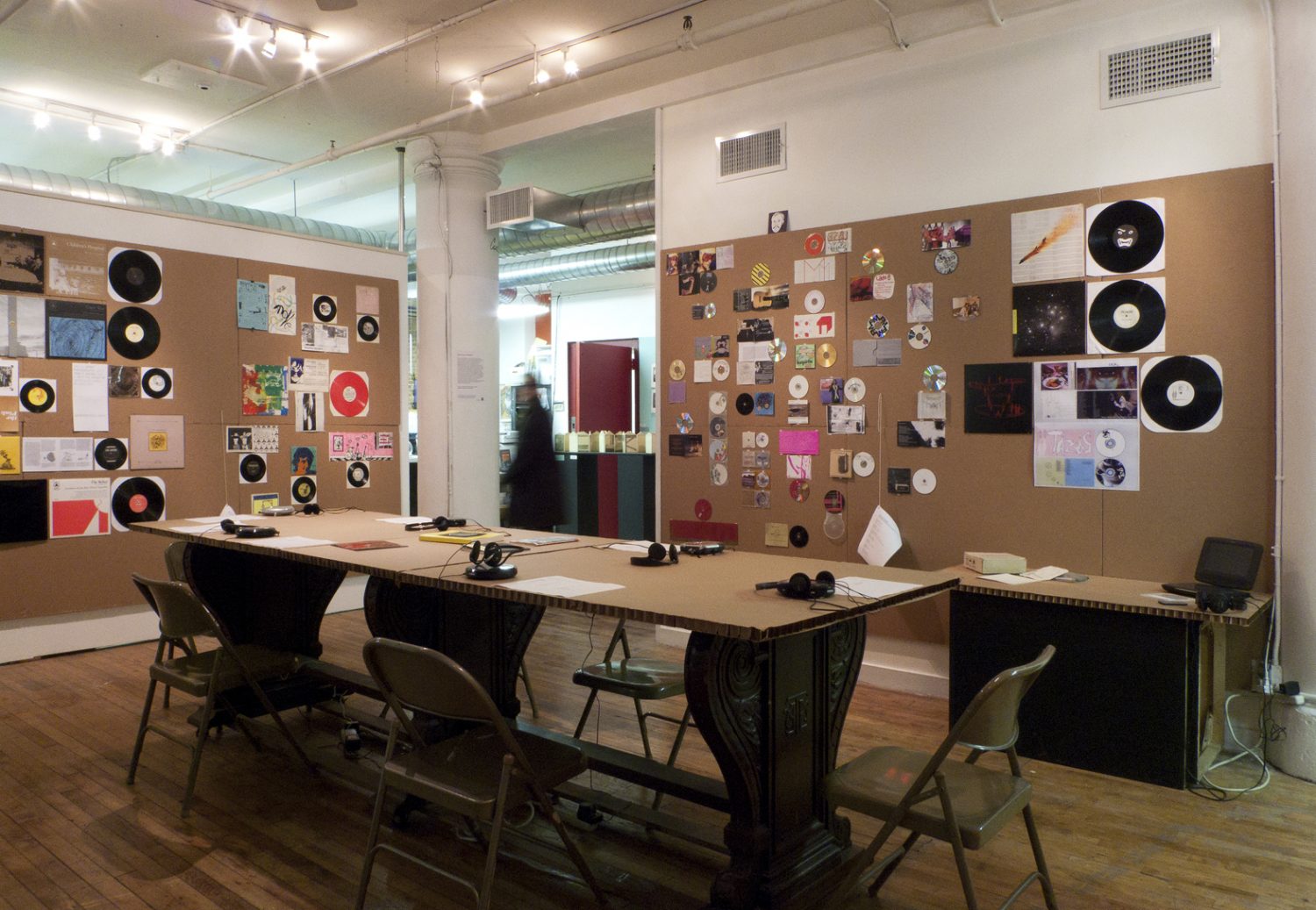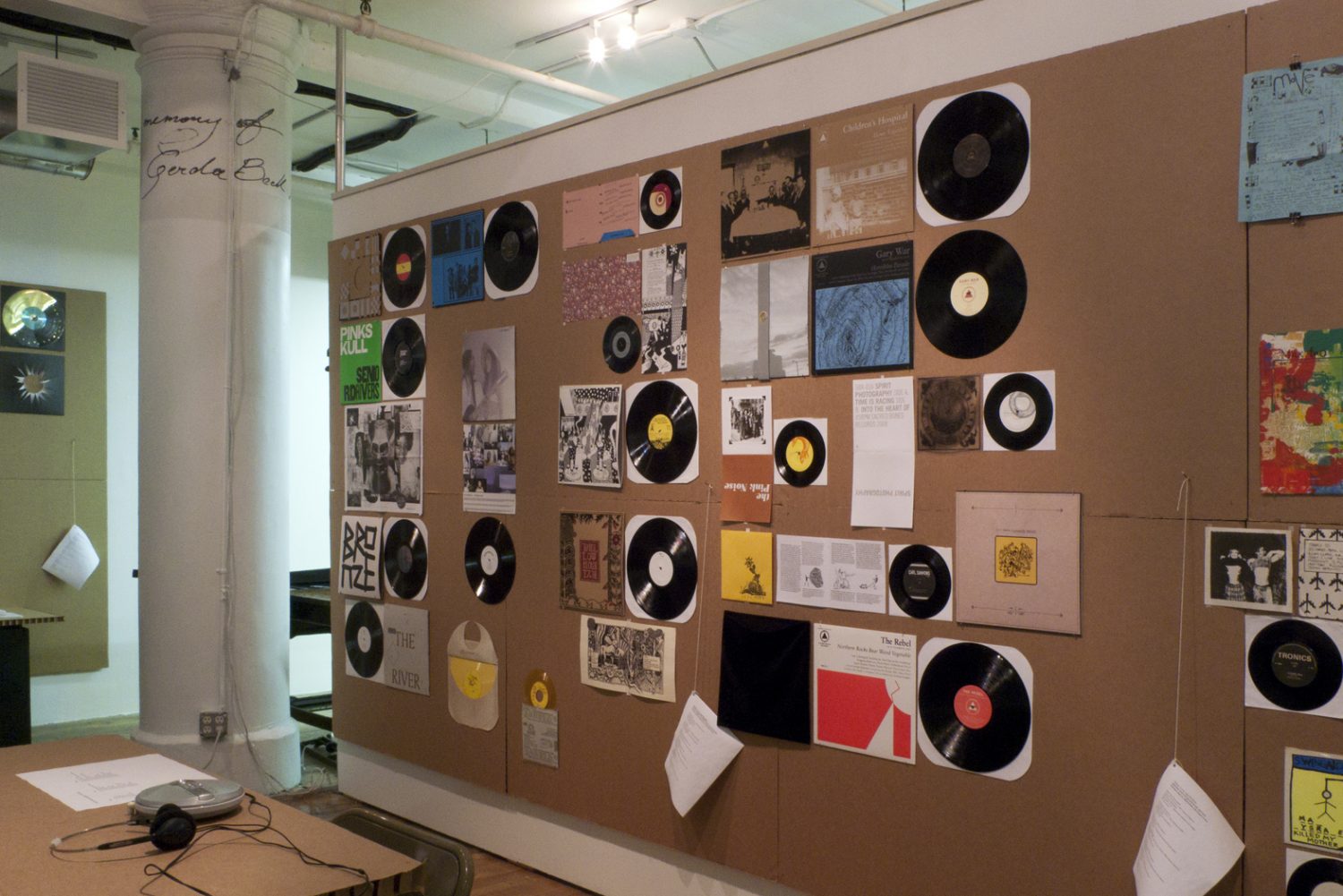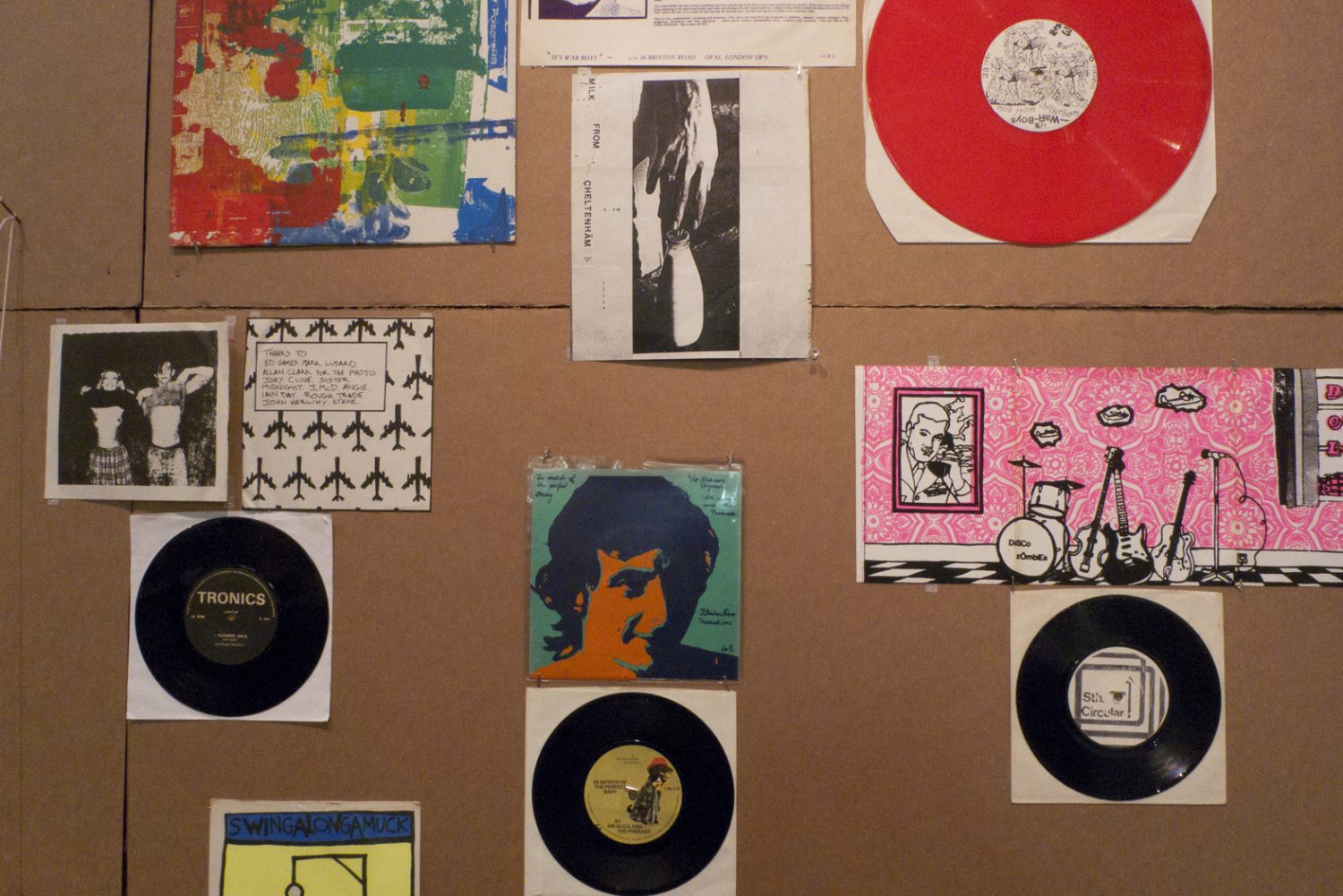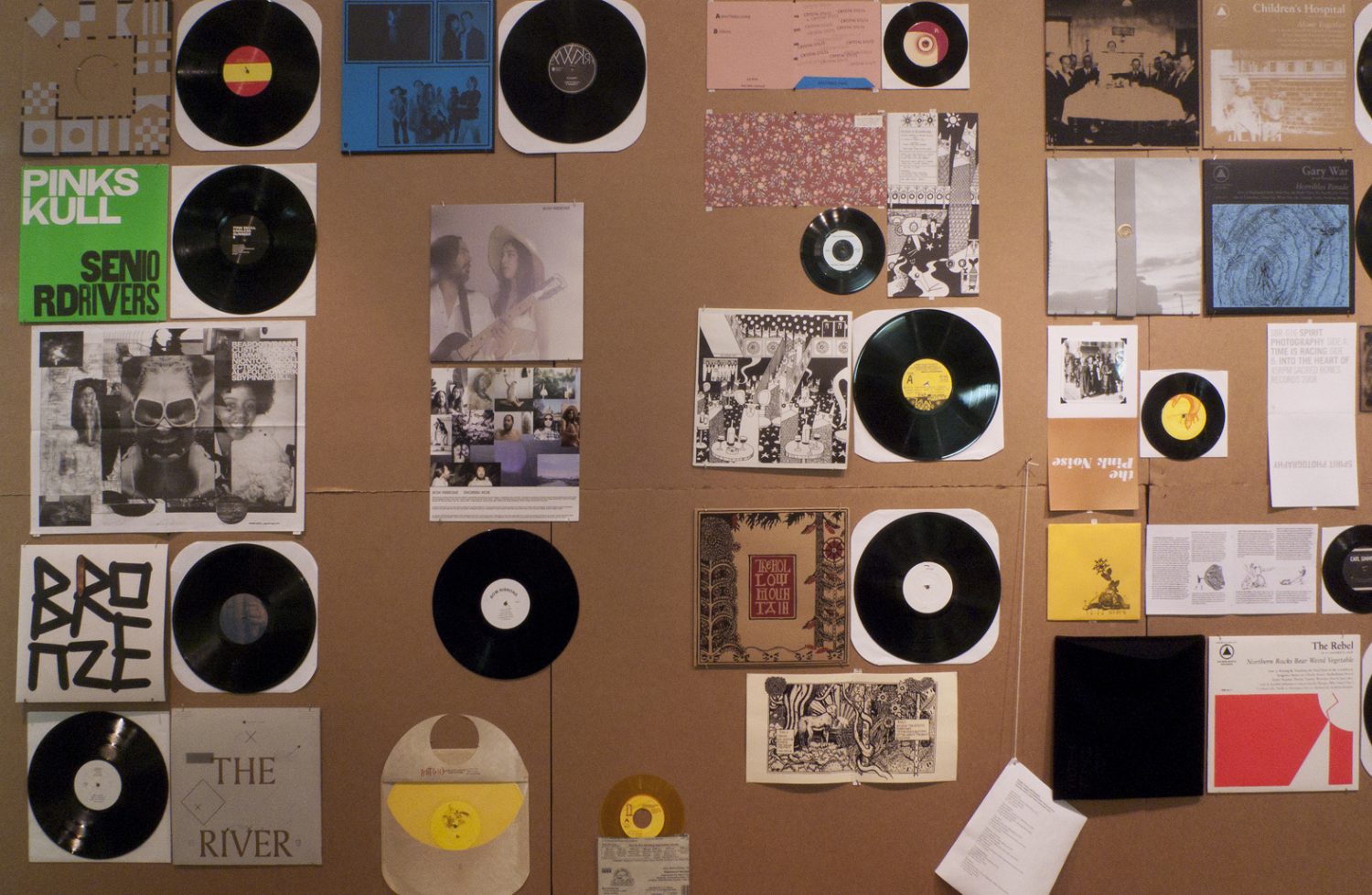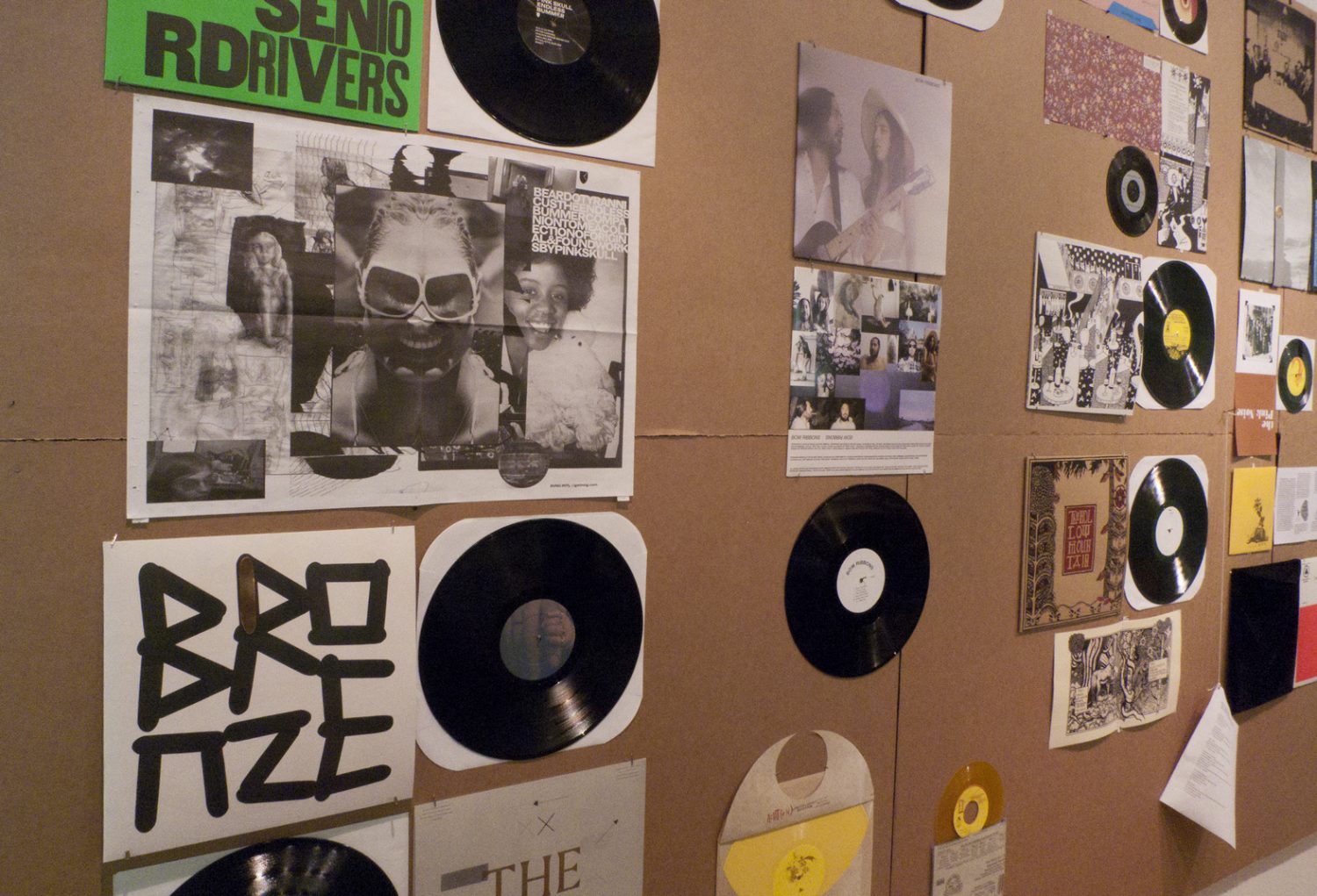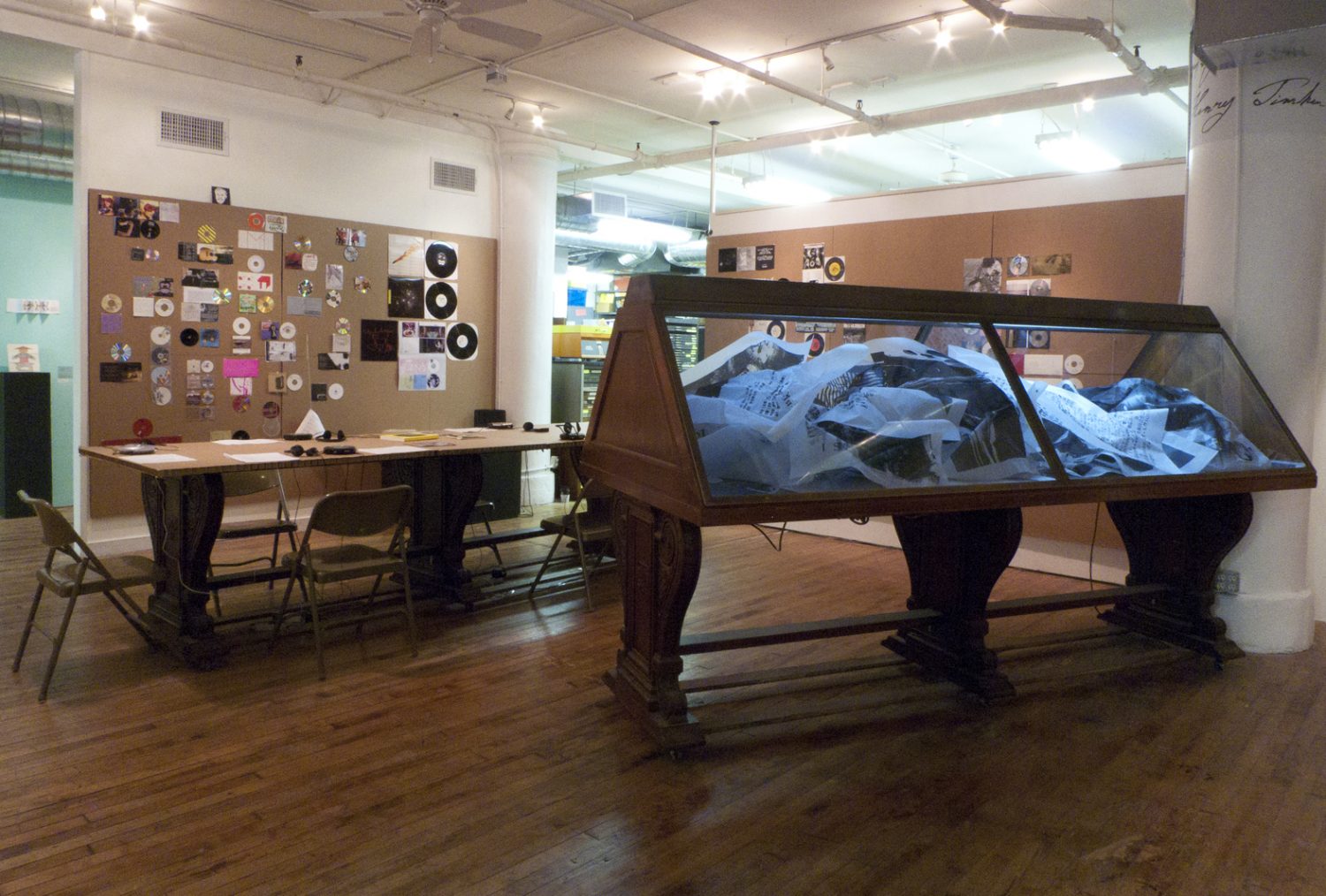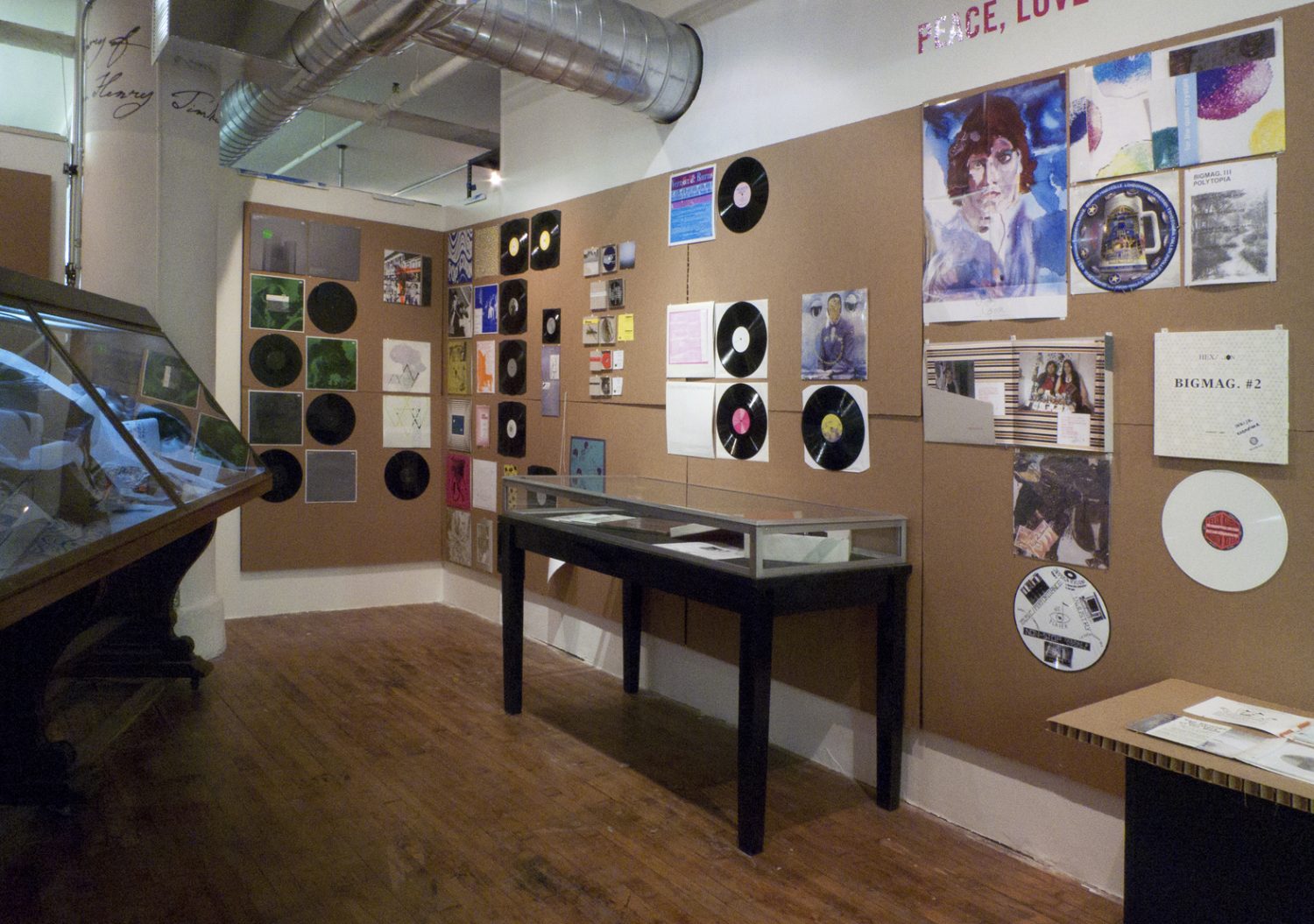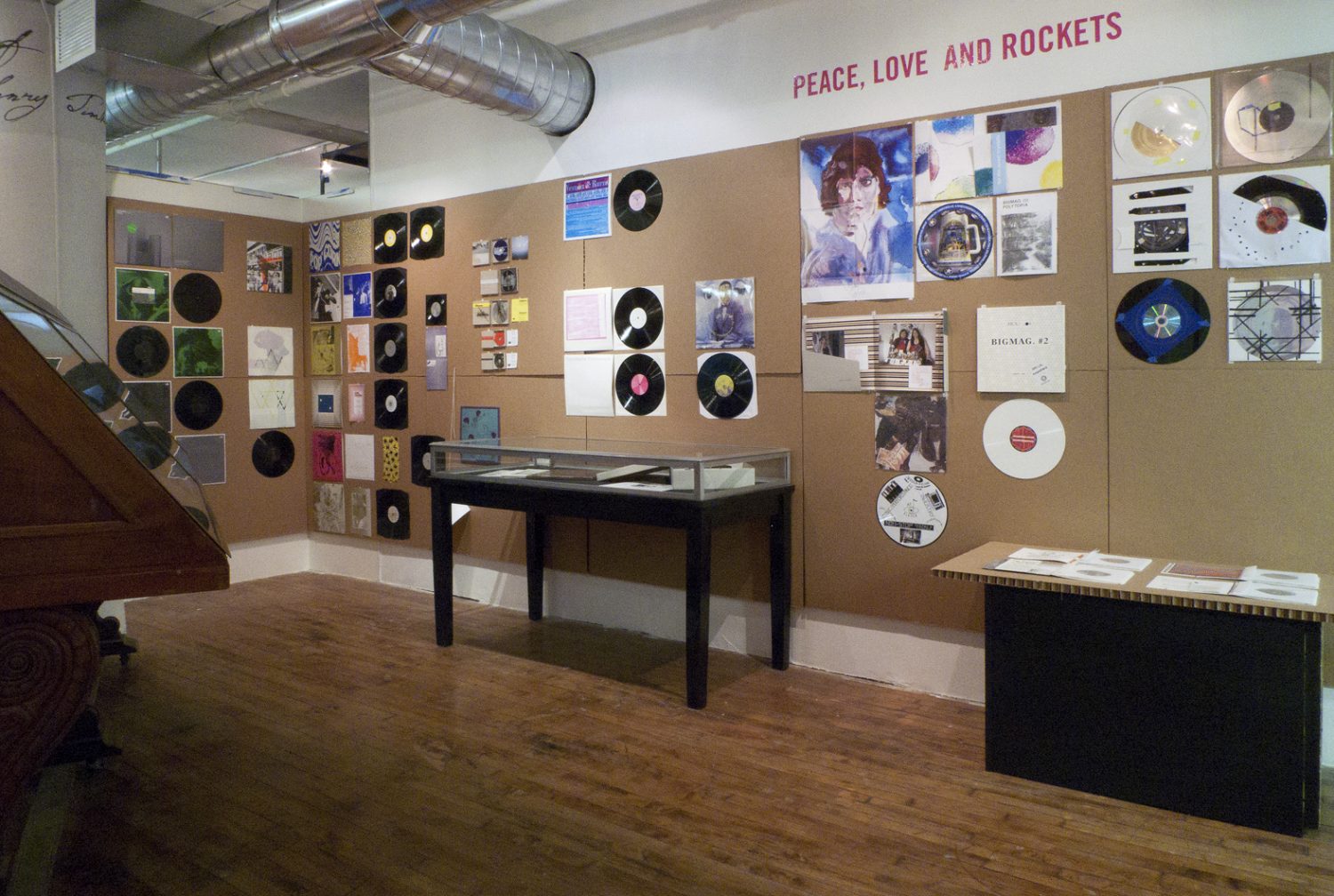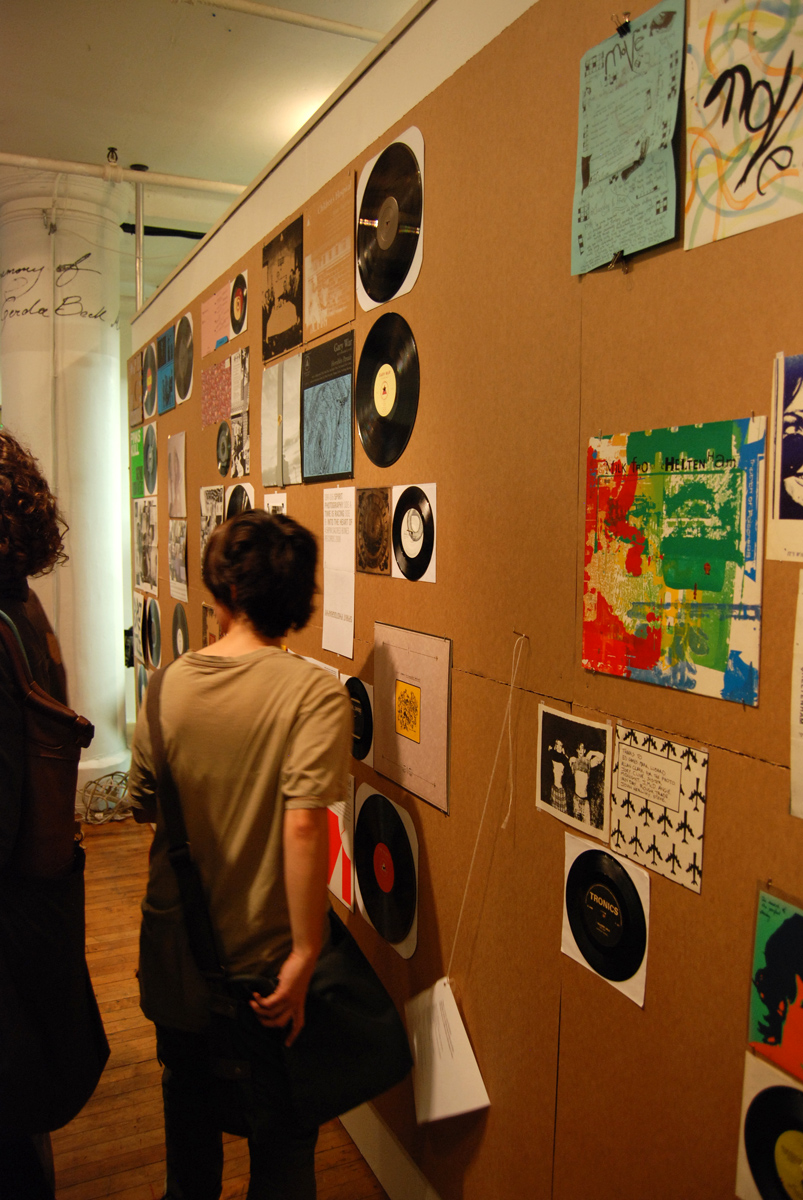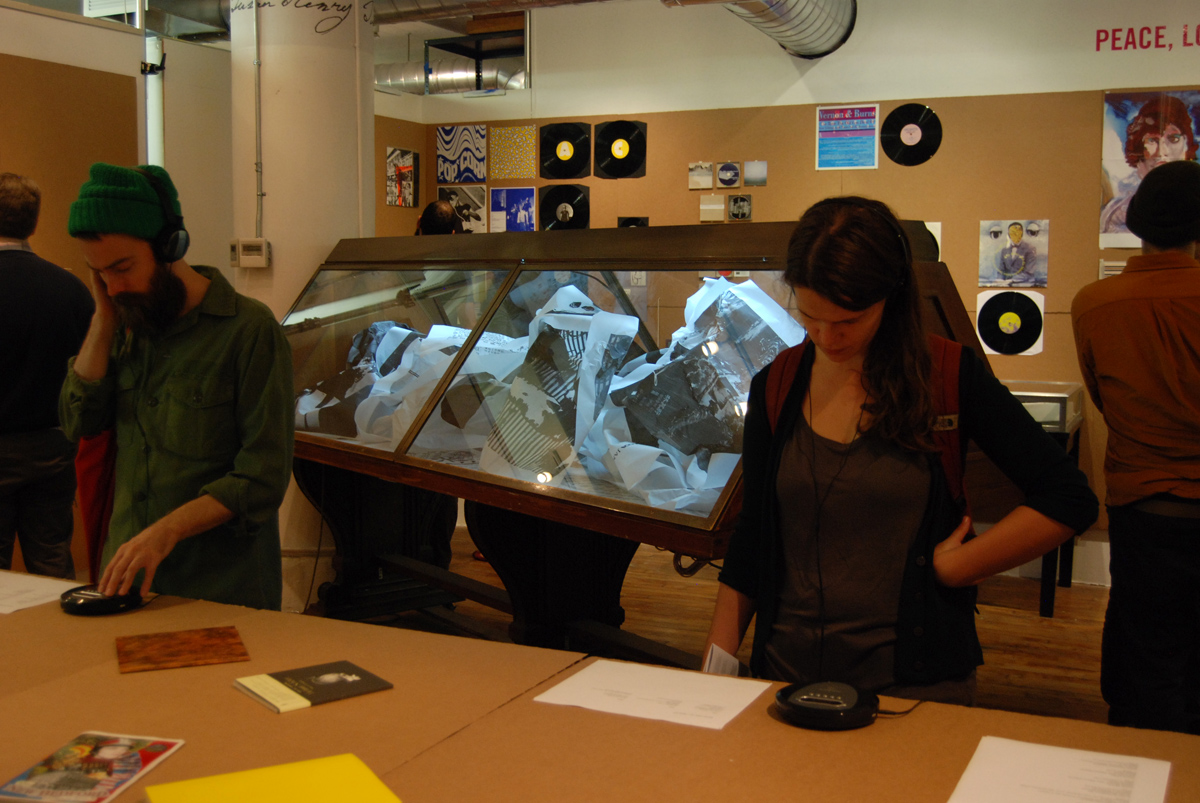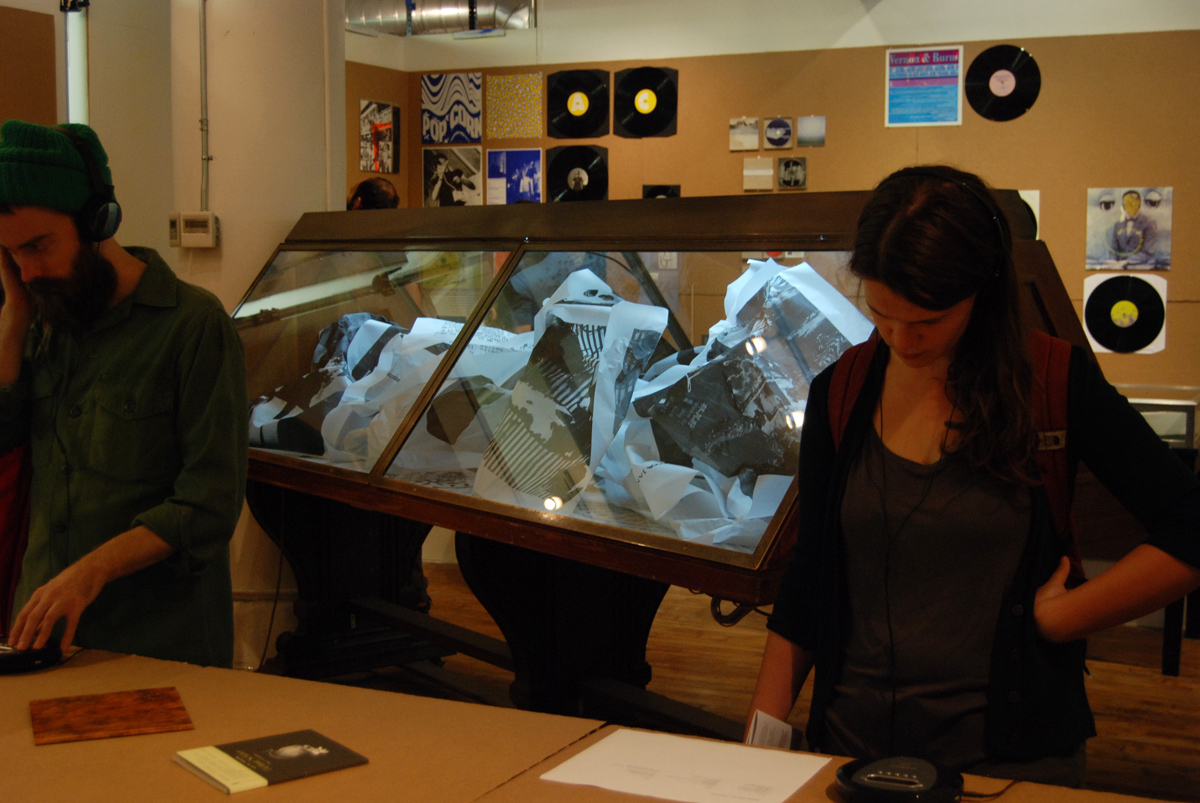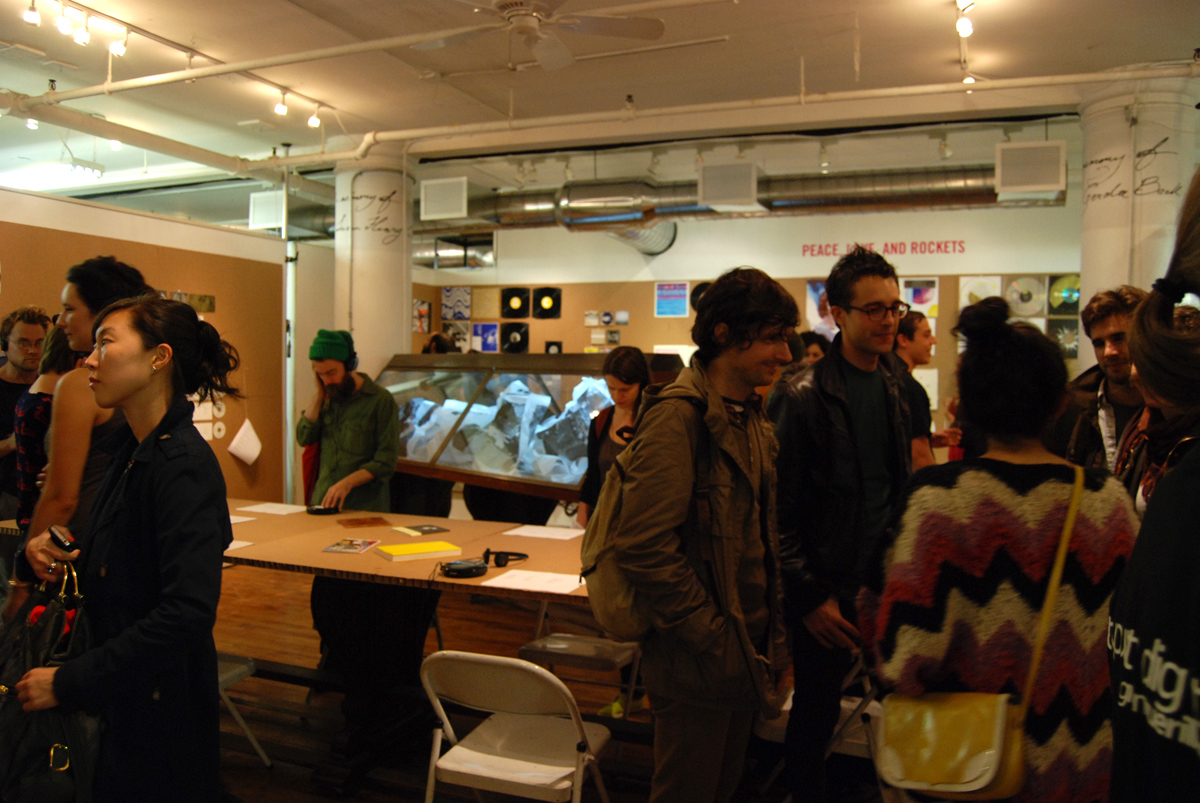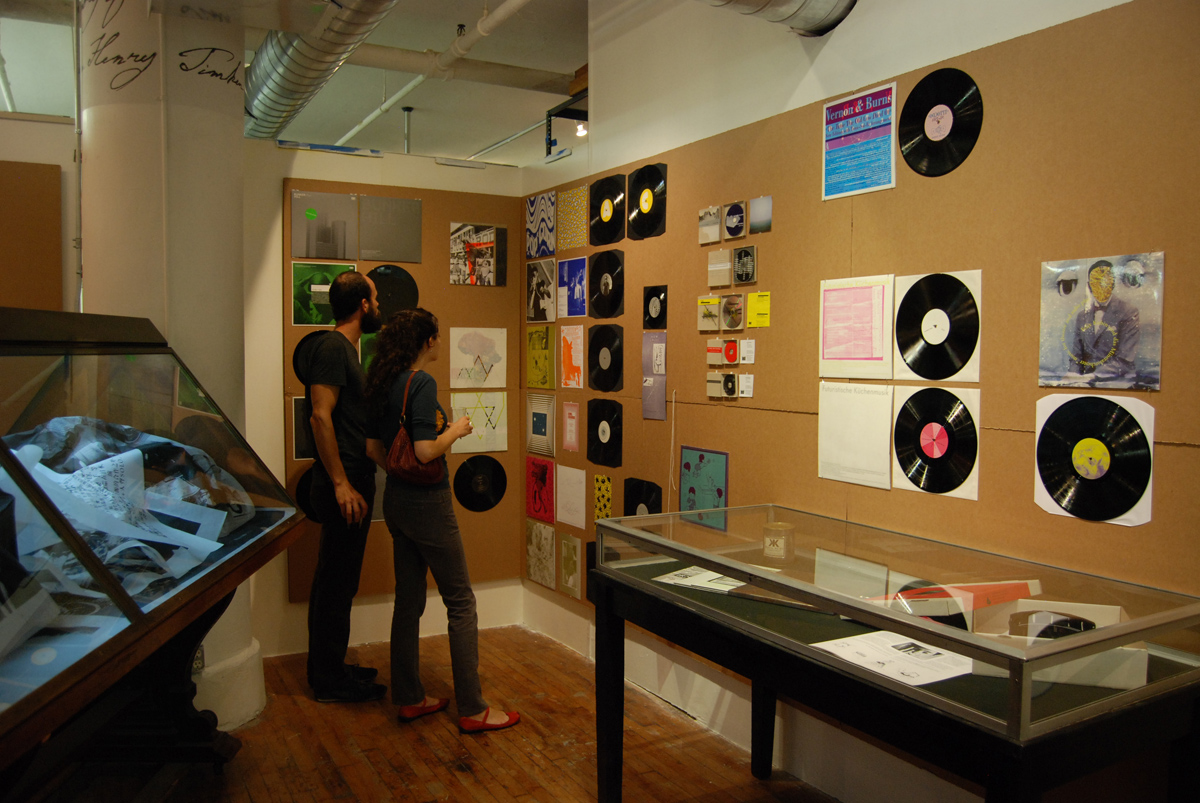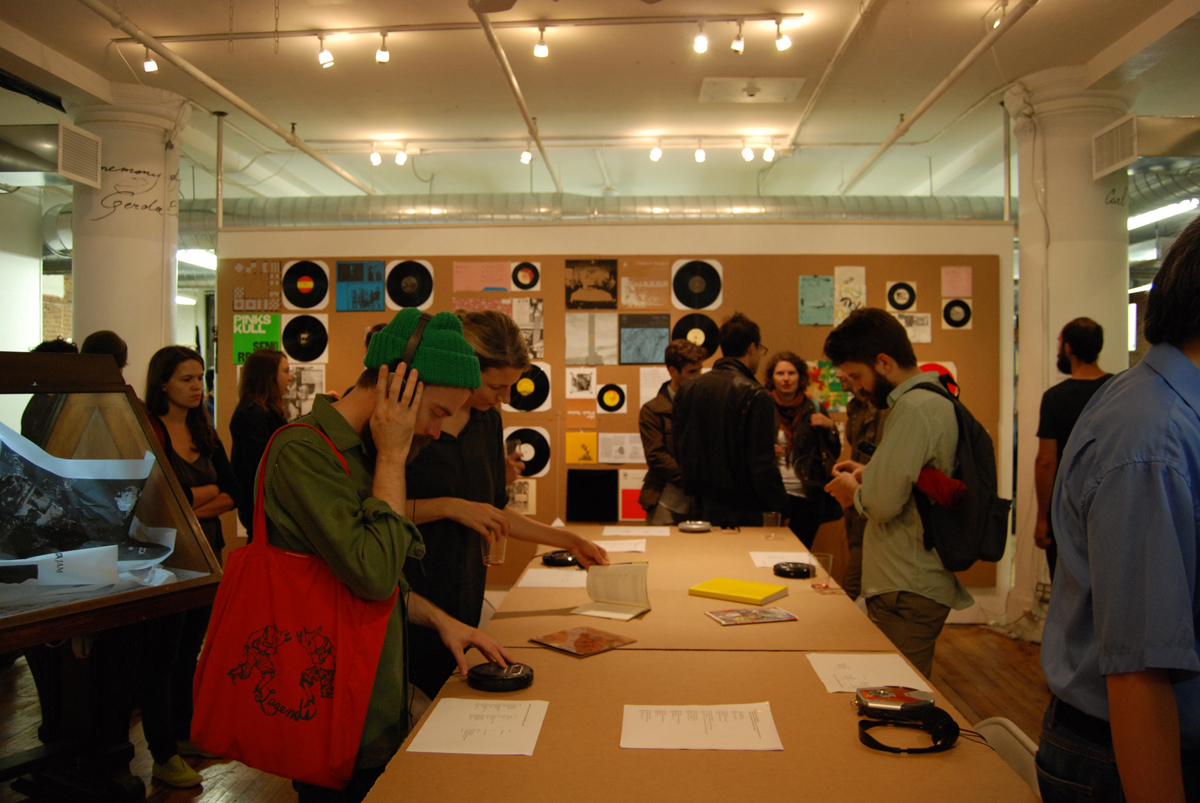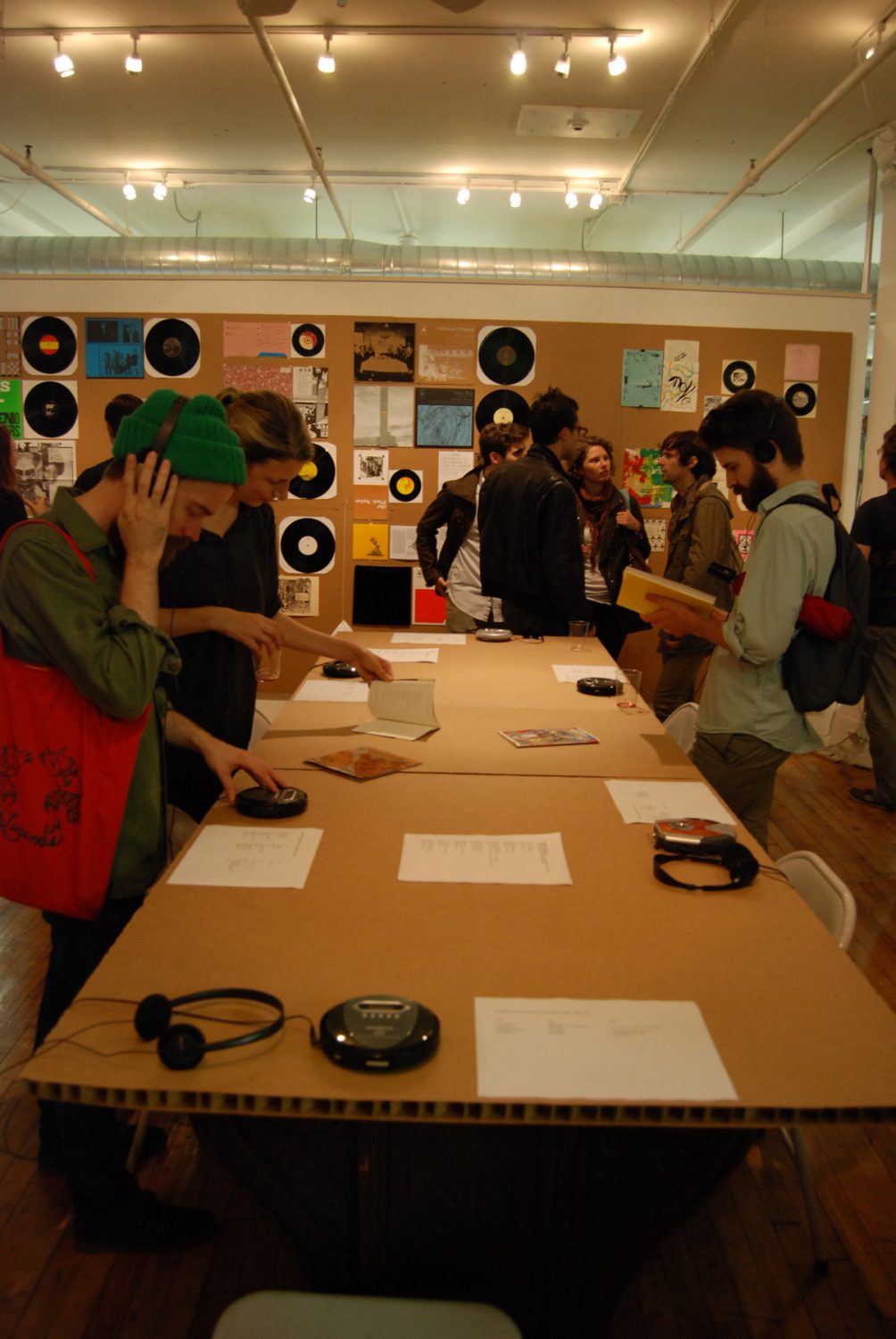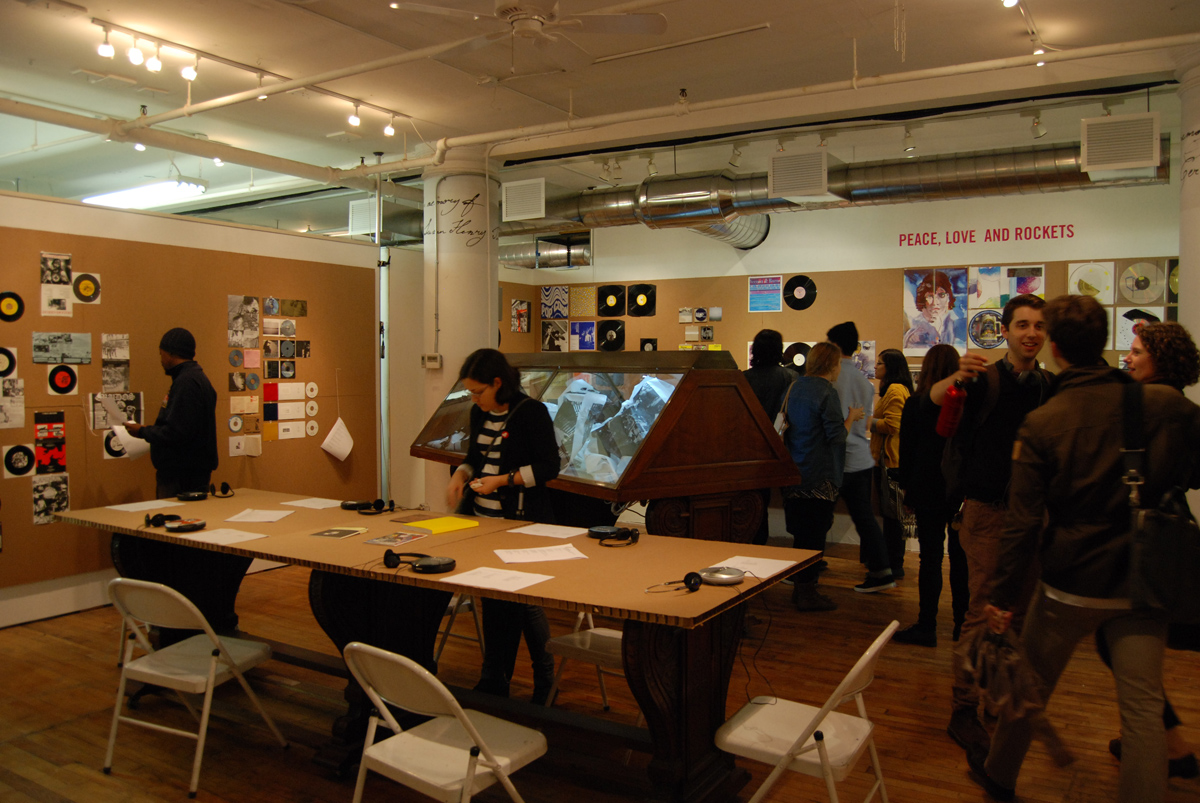2011 PEACE, LOVE AND ROCKETS
Installation views and opening, Peace, Love & Rockets
Exhibition organized by Felipe Mujica in collaboration with Keegan Cooke, Andreas Diefenbach, Claudio Fernández, and Yan Jun with Ruan Qianrui
The Center for Book Arts, New York
September 21 – December 3, 2011
^^^^^^^^^^^^^^^^^^^^^^^^^^^^^^^^^^^^^^^^^^^^^^^^^^^^^^^^^^^^^^^^^^^^^^^^^^^^^^^^^^^^^^^^^^^^^^^^
^^^^^^^^^^^^^^^^^^^^^^^^^^^^^^^^^^^^^^^^^^^^^^^^^^^^^^^^^^^^^^^^^^^^^^^^^^^^^^^^^^^^^^^^^^^^^^^^
Catalog text excerpt:
The process, the show, the installation
As collaborators of this exhibition, I invited Keegan Cooke from New York, Andreas Diefenbach from Frankfurt, Claudio Fernández from Santiago de Chile and Yan Jun with Ruan Qianrui from Beijing. They each represent a different city and continent and therefore each one also represents a different context. Each of them has a keen and deep knowledge of music history, most of the records and other artifacts in the show were selected by them. I have worked mostly as a mediator between the general concept of the show, The Center for Book Arts needs and program and finally a moderator between each collaborator.
Altogether the exhibition contains six sections:
1- Chilean and Latin American Lo-Fi Self Produced Rock, Electronic and Experimental
2- International Hardcore, Death Metal, and Punk
3- Chinese Rock, Noise and Experimental
4- European Electronic and Experimental
5- US current Alternative Rock and Independent Labels
6- British DIY 1970s’ Punk
As you will see through this catalog and also throughout the exhibition, each section and group of records functions in a specific way in accordance to its context. In Chile, homemade and very lo-fi CDs are the main way of getting material released, due to an almost complete lack of independent labels, magazines, and venues. Whatever underground or independent music movement happened during and post-dictatorship years of the 1990s was rapidly assimilated and transformed into the mainstream by the comfortableness of the comparatively more stable and strong economy of the 2000s. In Europe and the United States, nostalgia for the object remembered from childhood has brought back the release of vinyl records and even tape cassettes by local bands and small independent labels. Even though many bands and labels make strong use of online promotional tools such as Myspace and MP3 downloads, the dedication to the production of a tangible object has opened doors to a new wave of cover design. For the Chinese participants, music has a strong political connotation. Although their music is not political, their way of life – within an almost autonomous and parallel micro-economy and micro-culture – can be seen as a form of resistance to the power structures that dominate their daily life.
These sections were created organically as a response to the selections made by each collaborator. Two of the participants proposed music selections that were out of their supposed geographic area of interest, which in a way shows how in music locality is both a system of representation and also a loose gray area of production that is – and should be – open to other localities. Each section is shown independently and the order above is also the order of the sections in the gallery space (the sections in this catalog have been organized in this same order). Also, at the center of the exhibition space, a sound table was set up with six-CD players, one for each section.
The exhibition design of Peace, Love and Rockets – the walls covered with corrugated cardboard panels – was decided as a way to maintain a workspace aesthetic, a temporary and – why not? – punk feeling, as well as one that would also allow the installation process to productively open, as its structure permitted relatively easy changes of placement positioning. To attach the records directly to the walls or to have them displayed in glass cases would have made them be – and exist – in a situation too close to art, too close to an art piece. This in-progress and povera state relates conceptually and materially to the origins of all the music productions contained in the exhibition, to the general DIY mood of it. It is very important to keep honest to the spirit of what one is working on, looking at, showing and sharing.
….
